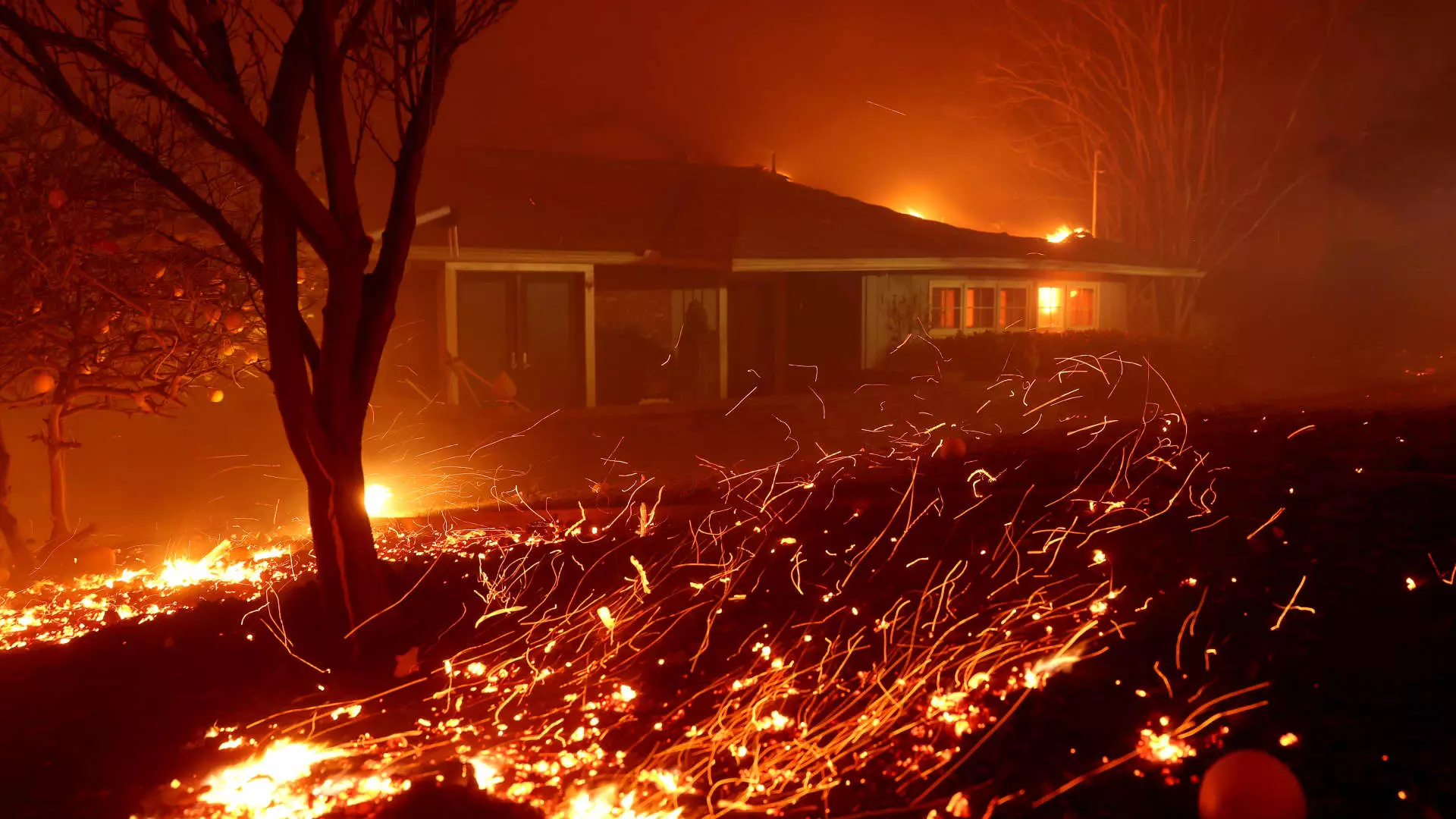The recent devastating wildfires in Los Angeles have exposed the fragility of the real estate market against the backdrop of a changing climate. As climate change transitions from a theoretical concept into a pressing reality, both homeowners and investors must grapple with the implications for property values and insurance costs. Various reports indicate that the ripple effects from these catastrophic events could reshape national housing markets, with substantial financial losses projected.
Although the Los Angeles wildfires’ immediate monetary consequences remain unclear, it is evident that the repercussions will extend beyond the smoldering forests and charred homes. Rising insurance premiums, projected at an average increase of 25% nationally over the next three decades, will be a primary driver of these changes. According to climate-risk firm First Street, a staggering 84% of U.S. homes could face decreased valuations by 2055. The anticipated decline is not merely an isolated concern; it signals a seismic shift across the entire real estate landscape. By the end of this period, homeowners could see a cumulative loss of $1.47 trillion in property value.
Experts like Jeremy Porter from First Street emphasize that climate change is not a distant future challenge but a clear and present danger affecting real estate dynamics across America. With certain regions at greater risk than others, states like Texas, Florida, and Louisiana may experience the most significant drops in property values. Reports forecast a potential halving of home valuations in vulnerable counties, prompting urgent discussions about future heating and cooling costs, property maintenance, and overall housing stability.
As the very foundations of the real estate market appear to be shaking, increased insurance costs will pose a direct threat to home ownership. Insurance market veterans like Dave Burt of DeltaTerra Capital forecast a bleak future for property owners, asserting that at least 20% of U.S. homes may suffer from value depreciation linked to climate-related risks. As the insurance industry recalibrates prices in reaction to natural disasters, homeowners could see their mortgage costs spike, resulting in diminished property values.
Burt, who successfully predicted the subprime mortgage crisis nearly two decades ago, warns that an echo of that market collapse is emerging due to climate risks. The rising expenditure of owning a home could lead to a downward spiral in its market value, potentially aligning with downturn indicators observed during the Great Recession from 2007 to 2012. The links between skyrocketing insurance costs and declining property values present a sobering reality for those invested in the housing market.
Senator Sheldon Whitehouse of Rhode Island has sounded alarms regarding the imminent danger posed by the insurance sector, suggesting that economic volatility will likely manifest through housing markets unable to sustain their values amid emerging climate challenges. As these factors weigh heavily on the market, it’s noteworthy that areas struck by climate-related disasters often experience a surge in foreclosures. Historical data indicates troubling trends: following Hurricane Sandy in 2012, foreclosures in impacted regions increased by 46%, and similar patterns followed the extensive floods in Iowa.
With mortgage giants like Fannie Mae beginning to examine climate risk in their underwriting processes, there is a growing acknowledgment within the mortgage market of these rising threats. While the current underwriting framework may not adequately incorporate climate data, it is becoming clear that failure to account for these changes risks further disruption to the housing market.
For those managing investments, the pressing need to adjust strategies in response to climate-related risks is paramount. Burt emphasizes the necessity for clients to understand the shifting landscapes and operationalize risk hedging against possible downturns. By refining asset management techniques—either through avoidance of high-risk securities or the application of derivatives—investors can better prepare for the future.
Potential responses extend beyond merely revisiting financial toolkits; local communities may also increase taxes to fund resilience initiatives that bolster infrastructure against climate threats. Such budgetary reallocations could influence property costs in many areas. Concurrently, the ongoing tension between policy decisions and climate preparedness becomes ever more pronounced, as seen in the recent move by the Trump administration to halt the Federal Flood Risk Management Standard, which aimed to improve the resilience of public infrastructure.
As the consequences of climate transformation become increasingly undeniable, stakeholders ranging from homeowners to large institutional investors must take proactive measures to adapt. The interwoven challenges of increased insurance costs, fluctuating property values, and rising maintenance expenses necessitate much more than traditional real estate strategies. Understanding the pervasive threat of climate change is not only an act of prudence but an essential step toward preserving both value and stability in the real estate sector. The time to act is now, lest we find ourselves at the mercy of forces beyond our control.


Leave a Reply